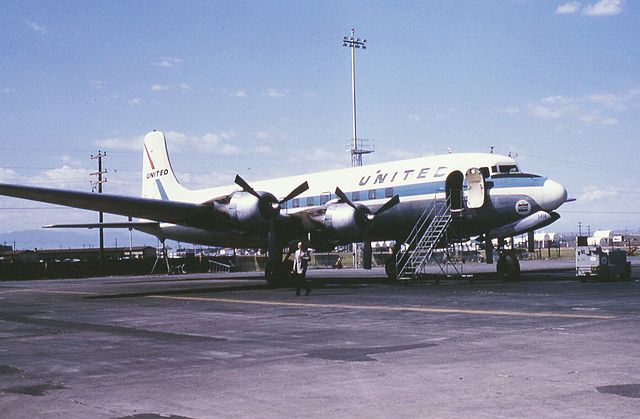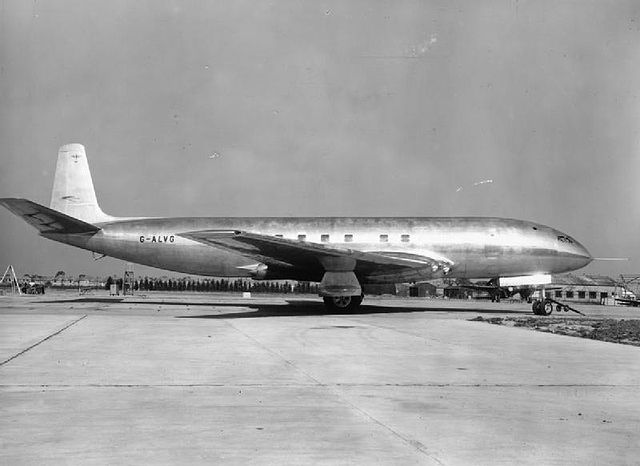The Douglas DC-6 is a piston-powered airliner and cargo aircraft built by the Douglas Aircraft Company from 1946 to 1958. Originally intended as a military transport near the end of World War II, Douglas reworked it after the war to compete with the Lockheed Constellation in the long-range commercial transport market. Douglas built over 700, and many still fly in cargo, military, and wildfire control roles.
Douglas DC-6
The prototype Douglas XC-112A which first flew on 15 February 1946, converted to DC-6 standard in 1956 and flown by TASSA of Spain from 1963 until 1965
Passengers alighting from an SAS DC-6: Note the upper row of windows, indicating this was built as the optional sleeper variant of the original-length DC-6
United Airlines DC-6 at Stapleton Airport, Denver, in September 1966
An airliner is a type of airplane for transporting passengers and air cargo. Such aircraft are most often operated by airlines. The modern and most common variant of the airliner is a long, tube shaped, and jet powered aircraft. The largest of them are wide-body jets which are also called twin-aisle because they generally have two separate aisles running from the front to the back of the passenger cabin. These are usually used for long-haul flights between airline hubs and major cities. A smaller, more common class of airliners is the narrow-body or single-aisle. These are generally used for short to medium-distance flights with fewer passengers than their wide-body counterparts.
A United Airlines Boeing 737 (foreground) and a Virgin America Airbus A320 (background), two of the world's most widely used airliners
Sikorsky Ilya Muromets
The Douglas DC-3 appeared in 1935
Prototype of the de Havilland Comet in 1949, the first jet airliner in the world








